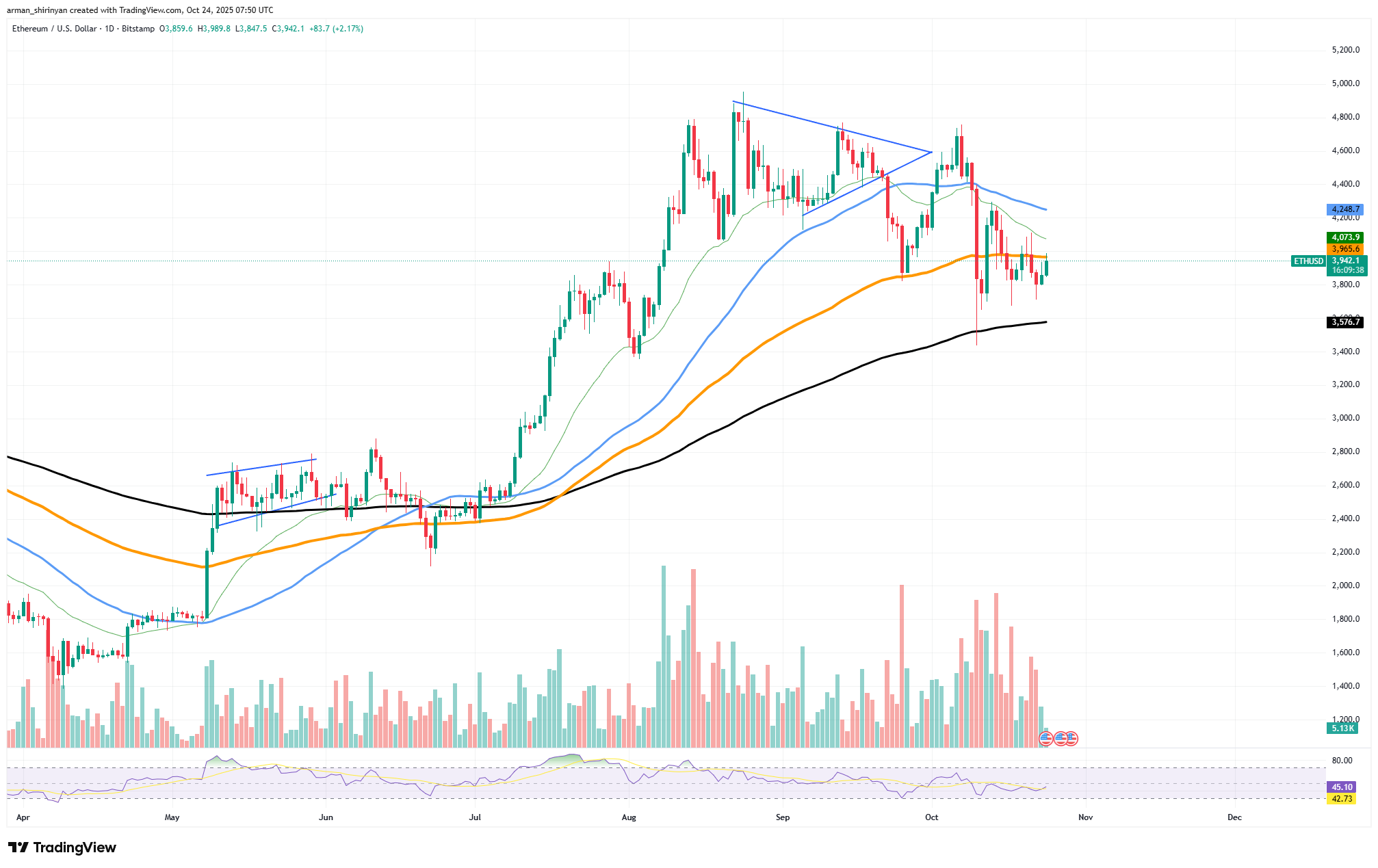
Disclaimer: The opinions expressed by our writers are their own and do not represent the views of U.Today. The financial and market information provided on U.Today is intended for informational purposes only. U.Today is not liable for any financial losses incurred while trading cryptocurrencies. Conduct your own research by contacting financial experts before making any investment decisions. We believe that all content is accurate as of the date of publication, but certain offers mentioned may no longer be available.
The Ethereum ecosystem recently saw one of its biggest whale transactions in weeks, when an Ethereum OG with an incredible 736,316 ETH, or about $2.89 billion, deposited a whopping $500 million USDT into newly opened vaults by ConcreteXYZ and Stable.
Deposit to Aave
The whale initially deposited 300,000 ETH into Aave, one of the biggest decentralized lending protocols, in order to borrow $500 million USDT, according to on-chain data.
One entity supplied the majority of the initial liquidity, as this massive transaction represents 64.5% of the $775 million USDT that has been locked into the vaults thus far. Since the vault’s initial stability now mainly depends on one player’s continuous participation, such dominance creates both excitement and concerns about concentration risk. The continued collaboration between established Ethereum whales and new DeFi infrastructure is demonstrated by this event.

Additionally, it portends a possible resurgence of whale-level ecosystem activity, which the Ethereum network has been lacking during the market’s recent lull. Other whales and institutions might be persuaded to return to DeFi lending procedures if the action inspires confidence.
Bitcoiners are not missing the memo
Almost at the same time, another on-chain anomaly surfaced, adding to the intrigue: 18eY9o, a Bitcoin miner wallet that had been inactive for more than 14 years, suddenly became active. After mining 4,000 Bitcoin (now valued at approximately $442 million) in 2009, the wallet moved 150 Bitcoin (about $16.6 million) to an external address. The money, which had been mined in the early days of Bitcoin, was combined into the wallet in 2011 and has not been touched since.
A billion-dollar Ethereum whale move, and the reactivation of a Bitcoin miner wallet from before 2010, both point to a possible change in attitude among the early adopters of the cryptocurrency. Whether intentional or the result of chance, these actions show that the most seasoned and wealthy cryptocurrency players are once again involved, which raises the possibility that something important is developing beneath the market’s surface.
 Dan Burgin
Dan Burgin Vladislav Sopov
Vladislav Sopov U.Today Editorial Team
U.Today Editorial Team